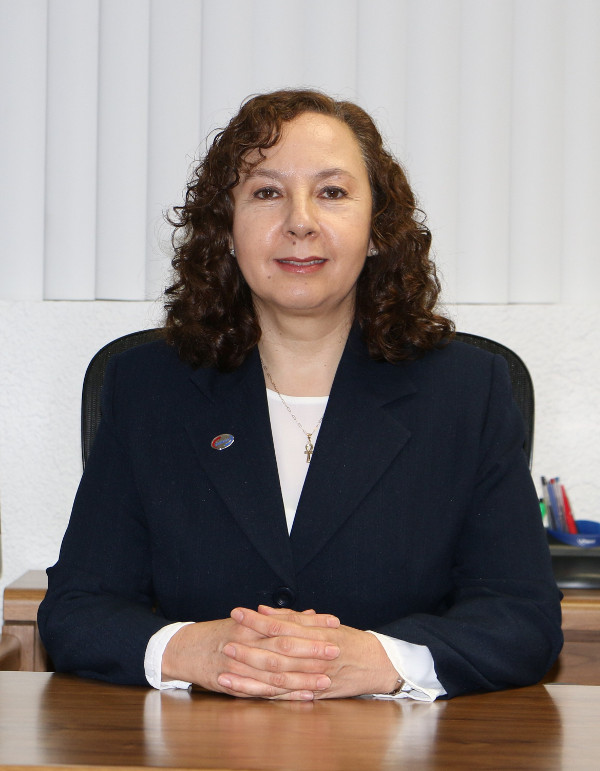Nowadays, global public policy emphasizes the search of solutions to confront the increasing environmental problems. The research in this issue is carried out through scientific and technological development. With this vision, the Department of Environment and Energy conducts its projects towards development of new alternatives that contribute to environment preservation and human health care.
Among the principal functions of this department are the study of physical, chemical and biological factors that affect the environment as well as the development of research in renewable energy matter.
As well, scientist carry out collaborative industry projects and also projects with the public sector mainly in air, water and soil pollution and waste management.
The main objectives of this department are developing new basic and applied research in the different environmental fields of study, to teaching in the environmental science and technology master and doctoral programs as well as knowledge transferring to industrial, public and social sectors.
Within the general lines of this department are:
Environmental research projects are focused mainly in monitoring and control of water, air and soil contaminants as well as waste management. In energy issues, the research is focused on taking advantage of solar thermal energy for electric energy production, food drying, air conditioning, as well as its efficient use.
Academic staff, including technicians and researchers, are highly qualified and their functions include main areas of environment and renewable energy. This specialist teach in the Enviromental Science and Technology master and doctorate programs being able to train qualified human resources. Its important to mention that both postgraduate programs offer double degree in Universitat de les Illes Balears (UIB) in Spain. UIB awards Chemical Science and Technology master and doctorate degrees.
To carry out research projects this department has five laboratories.
Air Quality Laboratory has infraestructure and equipment to make studies of contaminant emissions in point/stationary sources: moisture determination, particle concentration, combustion gases and metals contained in chimneys flux.
Air Quality Laboratory has infrastructure and equipment to carry out studies of contaminant emissions from stationary sources: moisture content, particle concentration measurement, exhaust gases, and metals concentration in chimney flux.
Air Quality Laboratory operates the Air Quality Monitoring Station where concentration levels of suspended particles PM10, nitrogen oxides, sulfur dioxide, carbon monoxide and ozone are permanent measured. Besides, in this station some meteorological parameters such as air direction and velocity, temperature, precipitation, solar radiation and barometric pressure are monitored. In addition, this laboratory allows researchers to make studies of suspended particles in the air, including sampling and characterization as well as size distribution, composition, organic composites, to say some examples.
Air Quality Laboratory offers sampling services and contaminant agents determination, chemical substances monitoring as well as noise and lightning measurement for the indoor air quality control. It should be noted that this laboratory has multiple tests authorized/accredited by Mexican Accreditation Entity (EMA) in areas such as contaminants determination from stationary sources and indoor air quality minitoring. Besides, this laboratory offers training courses in subjects related to atmospheric pollution: contaminant measurement and equipment management, environmental legislation, contaminant agents from indoor air quality, among others.
Waste Assessment Laboratory has a wide catalogue of environmental tests and acceptable risk determination tests for residue samples and other materials. In this laboratory different physical and chemical parameters,as well as organic synthetic composites and metals concentrations are measured. This laboratory takes part on diverse environmental studies that include hazardous waste identification and management with the purpose of reduce waste problems under the law and, in that case, search for the optimal treatment of this residues.
Waste Assessment Laboratory is accredited before Entidad Mexicana de Acreditación (EMA) in waste characterization tests according to Mexican legislation. These tests are known as CRETIB (corrosive, reactive, inflammable and toxic) and they allow the researcher to classify a residue as hazardous.
Micro and Nano-biotechnology Lab conducts research in the developing of functionalized nanomaterials with biomolecules (proteins, antibodies, etc) for medical applications (eg. molecular diagnostics or drug delivery systems). The impact of emerging nanomaterials in the environment and human health is also evaluated.
Biological treatments for the biotransformation or degradation of water contaminants are also studied to develop remediation technologies.
This lab have also collaborated with the industry by performing microbial activity assays in different matrices (solids, liquids, gels and surfaces); biocompatibility assays of materials with medical applications; bio-deterioration tests; isolation and characterization of microorganisms, etc.
Environment Radiological Surveillance Laboratory carries out studies related to the environmental ionizing radiation, given by natural and anthropogenic radioactive substances. For this, it has several high resolution spectrometers of alpha and gamma radiation. In this laboratory, studies of radon concentration in air, as well as radioisotope content in surface and groundwater, soil, sediments, plants and fish have been carried out.
In the Computattional Chemistry Lab the NANOCOSMOS group develops molecular modelling and materials characterization for diverse applications. As well in and predicting properties of interest for different Cimav research groups.
Properties that could be predicted include: structural, electrical, magnetic, thermochemical properties. Reaction sites definition and materials adsorption as well as periodic systems, substratum, among others. Absorption theoretical spectrum, Infrared and Raman molecular systems can be obtained in this laboratory, as well as the molecularenergy, reaction energy and macromolecules interaction with diverse ligand to find docking between a drug and a ligand.
Some of the materials applications characterized in Computational Chemistry lab drugs, corrosion inhibitors, agrochemicals, photovoltaic devices, nano vehicles for drug deliveringand Nanostructured materials.
This laboratory has diverse workstations with high capacity processors and specialized software as well as access to computer cluster “Prometeo”, which provides high computer performance.
The academic staff of the department is constituted by 9 researchers and 8 technicians.
Successful projects, publications on indexed high impact scientific journals and strengthen interinstitutional collaborations are generated because of the valuable human resource of this department.




 Computational Medicinal Nanochemistry
Computational Medicinal Nanochemistry Functional nanomaterials and cytotoxicity
Functional nanomaterials and cytotoxicity Nanotoxicology and Biohydrometallurgy
Nanotoxicology and Biohydrometallurgy